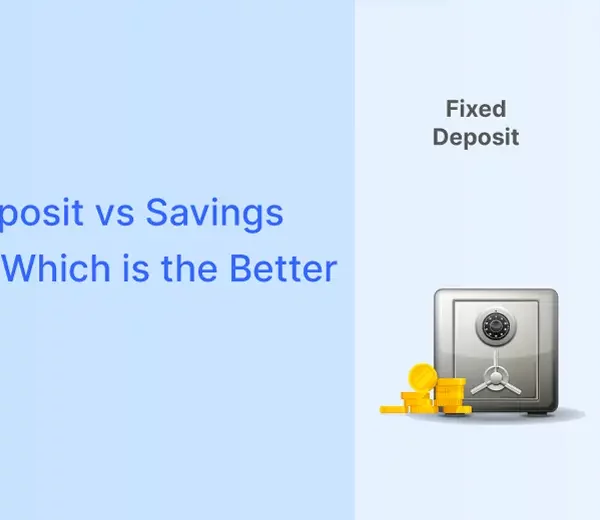Introduction
Embarking on a significant Big purchase is an exciting milestone that often requires diligent financial planning and disciplined saving. In this article, we will explore the realm of effective saving techniques that can help you realize your big purchase goals. By implementing these strategies, you will not only bring your dreams to completion but also cultivate financial stability in the process.
Before we dive into these proven strategies, we want to introduce you to Koshex, your trusted ally on this saving adventure. By signing up with Koshex, you will gain access to expert guidance, personalized recommendations, and valuable tools to optimize your savings journey.
Set Specific Goals
You must define your aspirations with precision. Be specific about the item or experience you desire, whether it is purchasing a new car, a tropical getaway, or a down payment for a new home.
Take the time to visualize your dream and understand why it is important to you. What will it bring to your life? How will it enhance your happiness, comfort, or personal growth? By clarifying the significance of your goal, you will fuel your motivation and strengthen your determination to make it a reality.
Alongside visualizing your dream, determine the exact amount of money you need to save. Conduct thorough research or consult experts to gain a realistic understanding of the cost involved. This will enable you to set a specific target and develop a well-structured saving plan.
Create a Realistic Budget
A well-planned budget serves as a financial roadmap, guiding you toward your desired acquisition. Here are some steps to help you create a budget that will set you on the path to success:
Assess your income: Having a clear understanding of your income will allow you to determine how much you can allocate towards saving for your big purchase.
Track your expenses: Monitor your spending habits for a few months to gain insights into where your money is going.
Set saving targets: Determine a realistic percentage of your income that you can comfortably allocate towards saving for your big purchase.
Prioritize and cut back: Analyze your expenses and prioritize your needs over wants. Identify areas where you can make adjustments or cut back without sacrificing your quality of life.
Automate Your Savings
Automating your savings is a powerful tool that can propel you toward your big purchase goal with ease. By leveraging the convenience of automated transfers, you can ensure consistent contributions without relying solely on willpower.
Here are the key benefits of automating your savings:
Consistency and Discipline: Automating your savings eliminates the need for manual transfers or remembering to set aside money each month.
Priority on Savings: By automating your savings, you prioritize your goal of saving for the big purchase.
Overcome Procrastination: Automating your savings removes the opportunity to delay or put off saving for your big purchase.
Cut Back on Discretionary spending
To fast-track your progress toward your big purchase goal, it’s essential to review and cut back on discretionary spending. By identifying areas where you can reduce or eliminate unnecessary expenses, you free up funds that can be redirected toward your savings.
Here’s how you can effectively cut back on discretionary spending:
- Assess your spending habits
- Prioritize your needs over wants
- Create a spending plan
- Cut down on entertainment expenses
- Avoid impulse purchases
- Seek discounts and deals
- Review subscriptions and memberships
Implement the 50/30/20 Rule
To effectively manage your finances and save for your big purchase, consider implementing the 50/30/20 rule. This rule provides a simple and practical framework for allocating your income.
Here’s how it works:
Necessities (50%): Allocate 50% of your income towards covering essential expenses such as rent or loan payments, utilities, groceries, transportation, and insurance.
Discretionary Spending (30%): Dedicate 30% of your income to discretionary spending, which includes expenses like dining out, entertainment, vacations, hobbies, and personal indulgences.
Savings (20%): Reserve 20% of your income for savings. This portion is crucial for building your big purchase fund.
Explore Cost-Saving Strategies
It is essential to explore cost-saving strategies that can help you stretch your budget further.
Here are some effective techniques:
Research and Compare: Compare prices from different sellers or retailers to ensure you’re getting the best deal.
Hunt for Discounts and Promotions: Timing your purchase strategically can help you save a significant amount of money.
Negotiate: Negotiating the price can be an effective way to save money.
Seek Alternatives: Be open to considering alternatives that provide similar benefits at a lower cost.
Track Your Progress
Monitoring your savings progress is crucial to staying on track and maintaining motivation throughout your journey to a big purchase.
Here are some valuable tips to help you effectively track your progress:
Set Milestones: Break down your big purchase goal into smaller milestones.
Use Visual Aids: Consider using a savings tracker or a vision board to visually represent your goal and the progress you are making.
Review Regularly: Schedule regular reviews of your savings progress.
Also, explore this article on the 9 Best Ways to Invest Rs.1,000
Seek Additional Income Opportunities
To fast-track your savings and reach your big purchase goal sooner, it’s worth exploring additional income opportunities.
Here’s why seeking extra income can be a game-changer:
Accelerated Saving: Additional income streams provide a boost to your savings, allowing you to accumulate funds more rapidly.
Increased Flexibility: Supplementing your income with additional streams provides greater financial flexibility.
Diversification: Having multiple income sources diversifies your financial portfolio. Relying on a single income stream can be risky, as it leaves you vulnerable to unexpected changes such as job loss or reduced work hours.
Skill Development: Exploring additional income opportunities often involves leveraging your skills and talents.
Redirect Raises and Bonuses
When you receive additional money, consider moving it straight to your savings account. The extra funds could arrive in the form of bonuses at work, salary increments, tax refunds, inheritance, etc.
Instead of treating it as extra money you can spend without any guilt, look at it as something that will help you achieve your savings goal faster. It may be fun to go out often and spend the extra money on dinners or movies, but you’ll have yourself to thank later if you save it instead.
Stay Committed and Flexible
Saving for a big purchase is a journey that requires dedication and adaptability. Here’s why staying committed and flexible is essential for reaching your goal:
Persistence Pays Off: It is crucial to stay committed to your goal, reminding yourself of the rewards that await you at the finish line.
Embrace Flexibility: While it’s important to maintain focus on your goal, it’s equally vital to be flexible in your approach.
Conclusion
Achieving your big purchase goals is within reach with effective saving techniques. By setting clear goals, creating a realistic budget, automating savings, and adopting smart strategies, you can make steady progress toward your dream purchase.
Stay committed, stay focused, and sign up with Koshex today to receive personalized guidance on optimizing your savings. Let’s embark on this journey together and turn your dreams into reality!
Frequently Asked Questions (FAQs)
Q1. How long will it take to save for my big purchase?
Ans. The time it takes to save for your big purchase will depend on various factors, such as the cost of the item or experience, your current savings rate, and your income.
Q2. Should I prioritize saving for my big purchase over other financial obligations?
Ans. Prioritizing your big purchase goals is important, but it’s equally crucial to consider your overall financial well-being. It’s recommended to strike a balance between saving for your big purchase and meeting your financial obligations, such as debt repayment and emergency savings.









Leave a Comment